Communicating a strategy to your team is an essential part of ensuring that everyone is working towards the same goals and objectives. However, it can be challenging to know where to start or how to effectively convey the strategy to your team members. Without a clear communication plan, your team may not fully understand the strategy or their role in achieving it, which can lead to misaligned efforts and decreased productivity.
To address this challenge, a simplified framework can be used to communicate strategy effectively to your team. The framework includes five key steps:
Start With Your Vision
Starting with your vision is a crucial step in communicating a strategy to your team. Your vision should provide a clear and inspiring picture of where your organization is headed and what it hopes to achieve. When communicating your vision, it’s important to:
- Be clear and concise: Your vision should be communicated in a way that is easy to understand and remember. Use simple, clear language to convey your message.
- Make it inspiring: Your vision should inspire and motivate your team members. It should be something that they can get excited about and feel proud to be a part of.
- Connect it to the mission: Your vision should be closely connected to your organization’s mission statement. It should explain how the mission will be achieved and why it’s important.
- Be authentic: Your vision should reflect your organization’s values and culture. It should be something that your team members can relate to and feel passionate about.
When communicating your vision, be sure to explain why it’s important and how it will benefit your organization and its stakeholders. This will help your team members understand the larger context of your strategy and their role in achieving it.
Set Clear And Measurable Objectives
Setting clear and measurable objectives is a critical step in communicating a strategy to your team. Objectives help to break down the larger vision into specific, achievable goals that can be measured and tracked. When setting objectives, it’s important to:
- Make them specific: Objectives should be clear and specific, so that everyone on the team understands exactly what needs to be accomplished. Avoid vague or ambiguous language, and instead use specific metrics and targets.
- Make them measurable: Objectives should be measurable, so that progress can be tracked and evaluated. This means setting specific, quantifiable targets that can be tracked over time.
- Make them achievable: Objectives should be challenging, but also realistic and achievable. This helps to motivate team members and ensure that they feel a sense of accomplishment when they meet their objectives.
- Make them time-bound: Objectives should have a specific timeline attached to them. This helps to create a sense of urgency and ensures that everyone on the team is working towards the same deadlines.
- Communicate them clearly: Once objectives are set, it’s important to communicate them clearly to the team. This includes explaining why they are important, what they will achieve, and how progress will be tracked.
By setting clear and measurable objectives, you can ensure that everyone on the team is aligned and working towards the same goals. This helps to create a sense of focus and direction, which can be incredibly motivating and productive for the entire team.
Break Down Your Strategy Into Inputs
Breaking down your strategy into inputs is a valuable step in communicating the strategy to your team. Inputs are the specific activities or tasks that need to be completed in order to achieve the objectives of the strategy. When breaking down your strategy into inputs, it’s important to:
- Identify the key activities: Start by identifying the key activities that need to be completed in order to achieve the objectives of the strategy. These activities should be specific and actionable, and should be directly linked to the objectives.
- Assign responsibilities: Once you have identified the key activities, assign specific responsibilities to team members who will be responsible for completing them. This helps to create a sense of accountability and ensures that everyone on the team knows what is expected of them.
- Determine timelines: Each input should have a specific timeline attached to it, so that team members know when it needs to be completed. This helps to create a sense of urgency and ensures that everyone is working towards the same deadlines.
- Set priorities: Determine which inputs are the most important, and prioritize them accordingly. This helps to ensure that team members are focusing their efforts on the most critical activities, and helps to avoid distractions or competing priorities.
- Communicate clearly: Once you have broken down your strategy into inputs, it’s important to communicate this information clearly to your team. Explain what inputs are needed, who is responsible for completing them, and when they need to be completed.
By breaking down your strategy into inputs, you can create a clear and actionable plan for achieving your objectives. This helps to ensure that everyone on the team is aligned and working towards the same goals, and can be incredibly motivating and productive for the entire team.
Outline Clear Milestones
Outlining clear milestones is an important step in communicating a strategy to your team. Milestones are specific points in time that mark progress towards achieving your objectives, and they help to create a sense of momentum and motivation for the team. When outlining milestones, it’s important to:
- Identify the key milestones: Start by identifying the most important milestones that need to be achieved in order to reach your objectives. These should be specific and measurable, and should represent significant progress towards achieving your objectives.
- Assign responsibility: Assign responsibility for achieving each milestone to specific team members or teams. This helps to create a sense of accountability and ensures that everyone on the team knows what is expected of them.
- Set timelines: Each milestone should have a specific timeline attached to it, so that team members know when it needs to be achieved. This helps to create a sense of urgency and ensures that everyone is working towards the same deadlines.
- Monitor progress: Monitor progress towards each milestone, and communicate this progress regularly to the team. This helps to create a sense of momentum and motivation, and helps to ensure that everyone is aware of the progress being made.
- Celebrate achievements: When milestones are achieved, celebrate these achievements with the team. This helps to create a sense of accomplishment and motivation, and can be an important part of building team morale and cohesion.
By outlining clear milestones, you can create a roadmap for achieving your objectives, and help to create a sense of motivation and momentum for the team. This helps to ensure that everyone on the team is aligned and working towards the same goals, and can be an important part of achieving success.
Identify Ownership
Identifying ownership is a critical step in communicating a strategy to your team. Ownership refers to assigning specific responsibilities and accountability for different aspects of the strategy to individual team members or teams. When identifying ownership, it’s important to:
- Clearly define responsibilities: Define the specific responsibilities that are associated with each aspect of the strategy. Be clear about what is expected of each team member or team, and ensure that everyone understands their role.
- Assign ownership: Assign ownership of each aspect of the strategy to specific team members or teams. This helps to create a sense of accountability and ensures that everyone knows who is responsible for each aspect of the strategy.
- Provide support: Provide support and resources to team members who are taking ownership of different aspects of the strategy. This helps to ensure that they have the tools and resources they need to be successful.
- Communicate regularly: Regularly communicate with team members who are taking ownership of different aspects of the strategy. This helps to ensure that everyone is aware of progress and any challenges that need to be addressed.
- Celebrate successes: Celebrate successes and accomplishments with the team members who have taken ownership of different aspects of the strategy. This helps to create a sense of accomplishment and motivation, and can be an important part of building team morale and cohesion.
By identifying ownership, you can ensure that everyone on the team is clear about their responsibilities and is accountable for their part in achieving the strategy. This helps to create a sense of focus and direction, and can be incredibly motivating and productive for the entire team.












